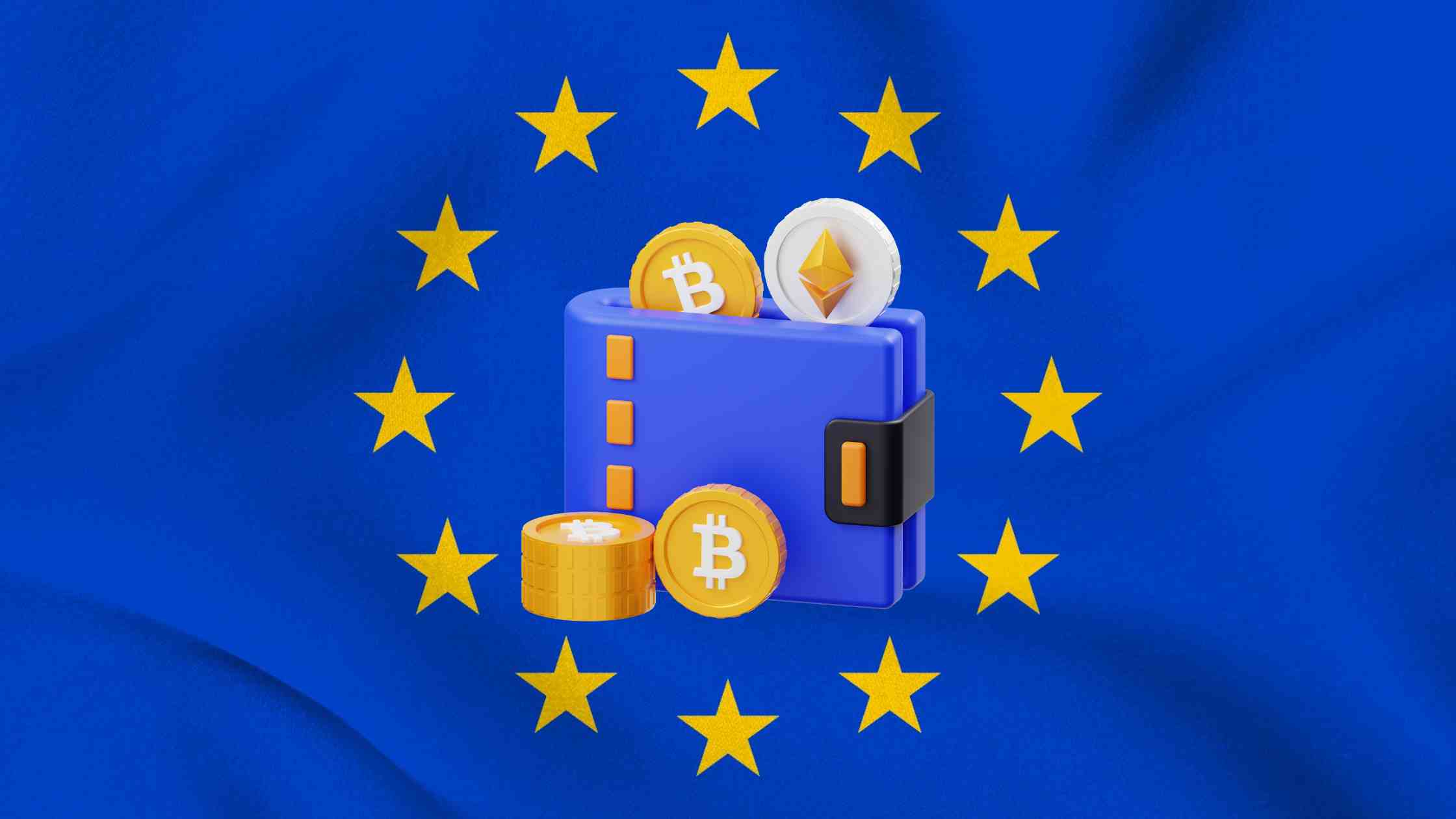by Rachael Muldoon, Partner, Charles Russell Speechlys
What is MiCA?
The Markets in Cryptoasset Regulation (EU) 2023/1114, or MiCA (“mee-ka”) as it is known, is a law that entered into force in June 2023.
What does MiCA do?
Prior to MiCA, the regulation of cryptoassets (otherwise known as digital assets) in the European Union (EU) was piecemeal, varying from member state to member state. For instance, only a small number of cryptoassets were regulated; chiefly those tokens falling within the definition of a ‘financial instrument’ in another piece of legislation called Directive 2014/65/EU referred to as MiFID II (“mi-fid two”).
MiCA establishes an EU-wide legal framework for the regulation of cryptoassets and the distributed ledger technology (DLT) underpinning them, such as blockchain technology. This means that some previously unregulated tokens are now regulated, falling within what is termed the EU’s ‘regulatory perimeter’.
What are MiCA’s objectives
Beyond providing a harmonised EU-wide legal framework for the regulation of cryptoassets, MiCA also aims to:
- provide legal clarity and certainty as regards cryptoassets and the broader application of DLT in EU financial services;
- pre-empt systemic concerns arising from the increasing adoption of cryptoassets, including that of stablecoins (see below for what stablecoins are);
- ensure the highest standards of consumer protections and market integrity;
- support innovation and fair competition by ‘levelling the playing field’ for the issuance and provision of services linked to cryptoassets; and
- address the risk of financial instability and monetary policy failures that may arise in the cryptoasset and DLT markets.
MiCA aims to be proportionate in its application, such that the extent of compliance required will vary depending on the risk profile of tokens, (whether on an individual basis in relation to particular investors; or with regards to their potential impact on the economy more broadly).
Why does it single out stablecoins?
Stablecoins are cryptocurrencies, the value of which is stabilised against volatility by an underlying collateral structure, including being pegged against conventional (i.e. fiat) currency, a commodity, or another asset. For instance, the cryptocurrency Tether or ‘USDT’ as it is known, is a stablecoin, with its value pegged 1:1 against the US dollar, as a single currency value reference point.
The strongest application of the rules will apply to those tokens falling within the stablecoin taxonomy. This is because they are deemed to have a ‘systemic’ role in terms of their potential for widescale adoption.
Is it just EU crypto firms that need to worry about MiCA?
No, the impact of MiCA is not confined to EU firms. Non-EU firms can be caught if they:
- offer certain cryptoasset services to customers within the EU; OR
- establish a branch or legal entity in the EU to provide cryptoasset services.
Overseas based cryptoasset firms doing business in the EU find themselves navigating distinct but overlapping regulatory regimes, including UK and US firms. We examine below the challenges this will pose.
What kind of cryptoasset firms are caught?
MiCA applies to three categories of cryptoasset market participants:
Certain token issuers
The issuer of a cryptoasset within the meaning of MiCA is the “legal person who offers to the public any type of cryptoassets” OR who “seeks the admission of such cryptoassets to a trading platform for cryptoassets.”
Crucially, the issuer may be the creator of the cryptoasset(s) in question, but not necessarily.
Cryptoasset service providers
A legal person or commercial undertaking will fall within the definition of a cryptoasset service provider (CASPs) if its “occupation or business is the provision of one or more crypto-asset services to clients on a professional basis.” The relevant cryptoasset services are as follows:
Placement of cryptoassets
- Advice in relation to cryptoassets
- Custody and administration in relation to cryptoassets
- Portfolio management of cryptoassets
- Execution of client orders in relation to cryptoassets
- Receipt and transmission of client orders in cryptoassets
- Exchange of cryptoassets for funds
- Exchange of cryptoassets for other cryptoassets
- Transfer of cryptoassets on behalf of clients
- Operation of a cryptoasset trading platform
Additionally, to qualify as a CASP, a legal person or entity must be:
- authorised to provide cryptoasset services under Article 63 MiCA; OR
- a credit institution, central securities depository, investment firm, market operator, electronic money institution, a company authorised under the European Communities (Undertakings for Collective Investment in Transferable Securities) Regulations 2011 (i.e. a UCITS management company); OR
- an alternative investment fund (AIF) manager permitted to provide crypto-asset services under Article 60 MiCA.
For further guidance, the European Securities and Markets Authority (ESMA) recently provided Questions and Answers (Q&As) delineating:
- the scope of entities that can be a CASP (here);
- CASP minimum capital requirements (here); and
- audit/certification for CASP financial statements (here).
Other market participants
Broadly speaking, this third category includes any person carrying out acts in connection to cryptoasset trading that:
- is admitted to a cryptoasset trading platform operated by an authorised CASP; or
- has requested admission to trade on such a trading platform.
What kinds of tokens does MiCA apply to?
MiCA defines a cryptoasset as “a digital representation of a value or of a right that is able to be transferred and stored electronically using distributed ledger technology or similar technology”. While this is a broad definition, designed to future-proof the Regulation, there are cryptoassets excluded from the scope of MiCA, as we detail below.
DLT is defined as “a technology that enables the operation and use of distributed ledgers”.
MiCA categorises cryptoassets within its scope in one of three ways:
E-Money Tokens (EMTs)
A stablecoin that aims to stabilise its value by referencing the value of a single fiat currency. EMTs can only be issued by credit institutions or e-money institutions authorised under the second Electronic Money Directive (2009/110/EC) (2EMD). As such, there is no authorisation approach for EMT issuance under MiCA.
Asset-Referenced Tokens (ARTs)
A stablecoin that is not an EMT and that purports to maintain a stable value by referencing another value or right or a combination of the two, including two one or more fiat currencies. Note that this definition under MiCA excludes central bank digital currencies (CBDCs).
Other cryptoassets
All types of cryptoassets that are not EMTs or ARTs (subject to the exclusions we have set out below). This category largely consists of utility tokens, which are cryptoassets used to convey to token holders rights of access goods and/or services provided by the issuer. Utility tokens are defined by MiCA at Title I as "a type of cryptoasset that is only intended to provide digital access to a good or a service supplied by its issuer." These are deemed to present a lower risk to consumers, and this is reflected in the corresponding obligations that apply to the provision of services connected to them. However, note that the Regulation makes a distinction between utility tokens granting rights in respect of existing goods and services, deemed to pose minimal risk, and those conveying rights of access to future goods or services, perceived to present investment risks.
As stablecoins, EMTs and ARTs are poised for widespread adoption by both retail holders and financial institutions. This possibility has focused regulatory attention on them, and on stablecoins more generally as a class of cryptoasset. Where the use of certain EMTs and ARTs causes particular concern in terms of (i) high market capitalisation (ii) large customer base or (iii) large volumes of transactions, the European Commission will deem a token a “significant token”. Affected issuers of such cryptoassets are subject to enhanced regulatory requirements.
Algorithmic stablecoins are also caught by MiCA. Unhelpfully, no definition is provided in MiCA. Which rules apply depends on whether they aim to stabilise their value by referencing either (i) a single fiat currency or (ii) one or more other type of asset, with EMT taxonomy applying to the former and ART the latter.
What cryptoassets are excluded?
- Financial instruments as defined by MiFID II
- Deposits, including structured deposits
- Funds (except if they fall within the EMT taxonomy)
- Non-life or life insurance products, or reinsurance and retrocession contracts within the Solvency II Directive (2009/138/EC)
- Pension products
- Securitisation positions
As Article 2(2) MiCA makes plain, if a cryptoasset is not transferable to other token holders, owing to digital ecosystem or other constraints for example, it will not be caught by MiCA.
What about NFTs?
Non-fungible tokens (NFTs), being cryptoassets that are unique and not mutually interchangeable, are excluded from MiCA by Article 2(3).
However, it is worth noting that interchangeable or fractionalised NFTs can fall within the scope of MiCA, as they are not deemed to be “true” NFTs in that they may be characteristically fungible. A token’s taxonomy will be determined on a case-by-case basis on the facts, including the characteristics of the token itself and the underlying rights and obligations it conveys to token holders, not the character attributed to it in a white paper or other promotional material, for instance. MiCA therefore pre-empts attempts to create cryptoassets which, at first glance, appear to be non-fungible, but whose use or characteristics, in fact, should bring them within the scope of the regime.
What kinds of things must firms do to comply with MiCA?
Firms within the scope of MiCA are subject to specific obligations in respect of each of the cryptoasset services. These obligations are numerous, including:
Authorisation of CASPs and issuers of ARTs
Authorisation must be sought for CASPs and issuers of ARTs when offering to the public or seeking admission to trade on a cryptoasset training platform, unless they are already registered under existing financial services legislation. Only EU legal entities can be granted authorisation to issue, offer, and seek admission to trade ARTs to the public. There is only a narrow range of exceptions allowed. By way of example, an exemption may be sought from the need to be authorised where the relevant entity is only operating in relation to small-scale ARTs, and for ARTs that are marketed, distributed, and exclusively held by qualified investors.
Transparency and disclosures in White Papers
In respect of the issuance, offer to the public and trading of cryptoassets. This includes an obligation to publish a white paper document detailing mandatory disclosures. The type and extent of information to feature in white papers will vary depending on the nature of the cryptoasset it relates to. A relevant EU member state national competent authority (NCA) is to be provided with these white papers by way of formal notice and they may in turn require modifications to be applied.
Marketing
Obligations in respect of cryptoasset marketing communications largely mirror those in MiFID II. MiCA applies restrictions on marketing communications prior to the publication of white papers, except for limited market research activities.
Significant stablecoins
As we discussed above, additional compliance measures must be met where ‘significant’ stablecoins are concerned.
What is the role of NCAs?
In January 2025, the Securities and Markets Stakeholder Group (SMSG) provided its advice to ESMA on the Consultation Paper regarding MiCA, focusing on the role and competencies of NCAs in supervising the crypto markets. In its advice, SMSG expressed its support for ESMA's initiatives and underscored the necessity for NCAs to possess adequate training and competence for effective supervision.
In particular, the SMSG:
- Emphasised the need to protect retail investors, particularly from unreliable or misleading information prevalent on social media platforms, therefore recommending that NCAs monitor these platforms and coordinate with consumer protection authorities to ensure a united approach to tackling fraud and scams.
- Expressed support for the idea that NCAs should develop the necessary knowledge and competence regarding cryptoassets and related technologies, and to this end should create expert units to monitor and analyse cryptoasset practices, with a particular focus on market abuse and manipulation.
- Advised ESMA to address the need for harmonised supervision across NCAs to prevent regulatory arbitrage.
Are crypto firms also subject to the EU Market Abuse Regulation?
Cryptoassets within the scope of MiCA (i.e. which are not financial instruments under MiFID II, or which are covered by another exclusion) fall outside the scope of EU Market Abuse Regulation (MAR). However, MiCA takes a similar approach to MAR in terms of preventing market abuse (Articles 86 to 92). Among the most significant provisions are those prohibiting insider dealing and market manipulation, and those relating to the disclosure of inside information.
On 17 December 2024, ESMA published its final report on Regulatory Technical Standards (RTS) for requirements relating to the detection and prevention of market abuse under MiCA. It was mandated to do this by Article 92(2) of MiCA. The RTS:
- specifies systems and procedures to prevent and detect market abuse in cryptoassets;
- sets out the template for reporting suspected market abuse in cryptoassets; and
- specifies the co-ordination procedures between competent authorities for detecting and sanctioning cross-border market abuse situations.
The rules enable supervisors to address any suspicions of market abuse and to follow up with enforcement action, where necessary.
Can I rely on reverse solicitation?
As it relates to MiCA, ESMA defines reverse solicitation as “where a client established or situated in the EU at its own exclusive initiative requests the provision of a crypto-asset service or activity” by a third party (i.e. non-EU) firm. In these circumstances, the third country firm may provide the cryptoasset service or activity requested without being in breach of the authorisation requirement established by MiCA. Note, however, that the reverse solicitation exemption only applies where the EU established or situated client is the exclusive initiator of the service provided. The ESMA guidelines (the “Guidelines”) on reverse solicitation under MiCA, produced in accordance with Article 61(3) MiCA), sets out the very limited circumstances where this exemption may apply.
Further, the Guidelines consider any promotion, advertisement or offer of cryptoasset services to EU clients or prospective clients by social media, online platforms, mobile applications, sponsorship, and any other physical or electronic means to be ‘solicitation’. Indeed, ESMA’s definition of ‘solicitation’ extends to where a third-country firm acts via another person (for example, via affiliates such as influencers).
Should an EU client place a cryptoasset order, the third-country firm may then market to that EU client cryptoassets of the same ‘type’, but only within the confines of the initial transaction. The guidelines therefore reinforce the previous messages from ESMA that the exemption for reverse solicitation is extremely narrow and should be viewed as the exception and not the rule.
Crucially, EU-based CASPs cannot rely on the reverse solicitation exemption and must obtain authorisation if they are to provide cryptoasset services within the EU.
What about consumer protection?
CASPs are subject to high-level conduct rules in respect of the services set out above. These rules include requirements for:
- Firms to act honestly, fairly, and professionally in the best interests of their clients and prospective clients (Article 66(1) MiCA).
- CASPs must make clients aware of the risks associated with transactions in cryptoassets (Article 66(3) MiCA).
What is the impact of MiCA on non-EU crypto firms?
MiCA makes access to EU markets contingent on firms’ compliance. As such, even though non-EU firms are not directly subject to MiCA, its provisions must be applied by them if they seek to operate within the EU, engage in the above activities, or service EU-based clients in these ways. This means that non-EU firms seeking an EU presence will find themselves navigating dual regulatory regimes.
While firms may be subject to domestic cryptoasset regulatory regimes, MiCA raises the bar in terms of extending supervision beyond anti-money laundering (AML), counter-terrorist financing (CTF) and sanctions, to market abuse, operational resilience, and consumer protection. Therefore, these firms must extend their operational compliance to meet MiCA’s stringent requirements if they wish to engage with the EU cryptoasset market.
Remember too that MiCA authorisation provides for passporting, allowing authorised service providers to operate across the entire EU. Without seeking approval under MiCA, non-EU firms will be denied EU market access, potentially leaving them at a competitive disadvantage at what is an exciting time for the global digital assets market.
> Reach out to Otonomos today to learn more or to organize a FREE initial call with Rachel.





